Callahan missed the Lightning’s final three games of the regular season, but he was on the ice for Monday’s practice and appears to be on track for Game 1. Monitor his status on Tuesday, but all things are pointing towards him playing on Wednesday.
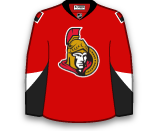
Callahan missed the Lightning’s final three games of the regular season, but he was on the ice for Monday’s practice and appears to be on track for Game 1. Monitor his status on Tuesday, but all things are pointing towards him playing on Wednesday.

Johnson suffered an upper-body injury in the Lightning’s season finale on Saturday and did not return. He was not on the ice for Monday’s practice so the Lightning will wait and see if he is available for Tuesday’s practice.

Gudbranson missed the last three games of the regular season, but will be back in for the start of the playoffs. Gudbranson doesn’t do much in the way of offence, but he is a big, physical defenseman who will play a big part in a playoff series for the Panthers.

Trocheck has missed the last six games and appears to be in danger of missing the start of the playoffs. Trocheck did not skate on Monday and is still wearing a walking boot, so his return does not appear to be imminent. This is a tough break for Trocheck, who had 25 goals and 28 assists (53 points) in 76 games this season.

Vlasic has been out since March 17th with a lower-body injury, but he will return just in time for Game one of the playoffs. Vlasic is an excellent two-way defenseman, who picked up 39 points (8G / 31A) in 67 games this season. Look for him to be reunited with Justin Braun.
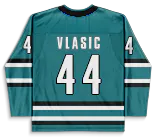
Anisimov missed the last two games of the regular season, but will be in the lineup in Game 1 vs. the Blue. Anisimov had a strong season between the NHL’s leading scorer Patrick Kane and rookie sensation Artemi Panarin, posing 20 goals and 22 assists (42 points) in 77 games.
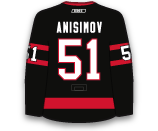
McDonagh missed the final three games of the regular season and will definitely miss the start of the Rangers’ playoff series with the Penguins. With McDonagh out, Dylan McIlrath will remain in the Rangers’ lineup.

Ladd was absent from Monday’s practice, but head coach Joel Quenneville said that Ladd is fine. Ladd has registered eight goals and four assists (12 points) in 19 games since being acquired from the Jets.

Backes’ absence on Monday suggests that he won’t be available for Game 1 on Wednesday, but monitor his status during Tuesday’s practice to be sure. He is expected to be back at some point during the first round. Magnus Paajarvi will take his spot until he is able to go.
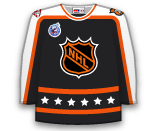
Maatta missed the final nine games of the regular season and might miss the start of the postseason as well. He took part in the Penguins’ practice this morning, but said “I really can’t say for sure” when he was asked if he would play on Wednesday.

Malkin has been out since March 11th and remains day-to-day. He reportedly skated prior to the Penguins practice, but did not take part in the practice session. All signs are pointing towards him missing the start of the series, but could be back later in the series or to start the second round.

Murray left Saturday’s game in Philadelphia with an upper-body injury and did not return. The Penguins are already without Marc-Andre Fleury, so their game one starter could be Jeff Zatkoff if Murray and Fleury are unable to go. Murray’s injury isn’t overly serious, but he is day-to-day.

Haula missed his second straight practice with an undisclosed injury, but head coach John Torchetti said that he “likes Haula’s chances” of playing in Game 1. Haula was on a tear in March, but has been held off of the scoresheet for the last four games. He finished the year with 14 goals and 20 assists (34 points) in 76 games.

Shaw missed the final four games of the regular season, but will be ready for game one on Wednesday. Shaw had 14 goals and 20 assists (34 points) in 78 games this season.
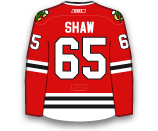
Hossa missed the final three games of the regular season and will be in the lineup for Game 1 on Wednesday. Hossa had a down season, posting a just 13 goals and 20 assists (33 points) in 64 games, but has averaged 0.73 points per game in his last three playoff appearances.
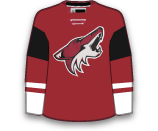
Allen missed the final three games of the regular season with a lower-body injury, but says he is 100 percent and will return as Elliott’s backup in the Blues’ series opener vs. Chicago. The Blues are set up nicely with a great goaltending duo heading into the postseason.

The Red Wings utilized Glendening in a shutdown role vs. the Lightning last year. He will be called upon to do the same this year, so his availability for Wednesday’s game will be important to the Red Wings’ success. He averaged 14:35 TOI in the regular season and averaged 15:31 TOI in the seven game series last year.

Kucherov missed the season finale on Saturday, but said he will play on Wednesday despite being sore. Kucherov set career-highs in goals (30) and points (66) in 77 games this season. He scored 10 goals in the playoffs last year, but had no goals and four assists in the seven game series vs. Detroit.

Hedman missed the final three games of the regular season, but he likely sat out the final game as a precaution. Hedman’s return is huge for a Lightning team that will be without at least Anton Stralman on the blueline and Steven Stamkos up front. Hedman had 10 goals and 37 assists (47 points) in78 games this season and had three assists in the Lightning’s seven-game series vs. the Red Wings last year.

Seguin took part in Monday’s practice, but skated in as an extra, which suggests that he won’t be ready to go to begin the playoffs. Seguin is three and a half weeks into his original 3-4 week timetable, so Seguin’s return appears to be on the horizon.

The NHL injury report is updated daily so that you can see the latest injury news ahead of puck drop in any of today’s matchups. Seeing timely updates to the NHL injury report can make a major impact on your daily fantasy sports picks and wagers on a particular game. All information provided on the NHL injury report is provided directly by the NHL and each respective franchise to ensure accuracy.
While the minimum amount of time spent on the injured reserve list is seven calendar days, there is no maximum amount of time that a player can be placed on the injured reserve list. If a player is set to be sidelined for longer than 24 calendar days or 10 NHL games, then a club may opt to place them on the long-term injured reserve instead. This allows franchises with the ability to exceed the salary cap while a player is placed on this reserve list.
No injury recovery timeline is the same as another as there are several factors that go into the rehab process for a player being affected by injury. Factors include but are not limited to, injury severity, player injury/medical history, age, as well as the location of the injury. Some injuries are able to clear up in a matter of days, while others may take an athlete out of action for the entirety of a season.